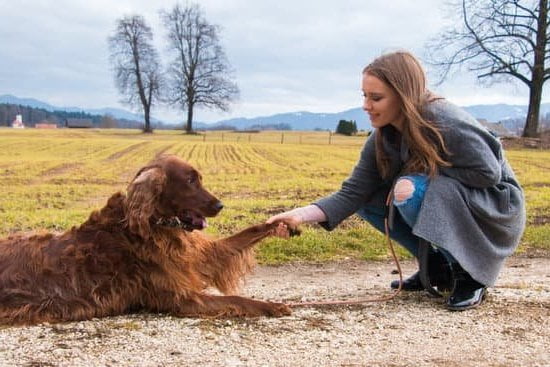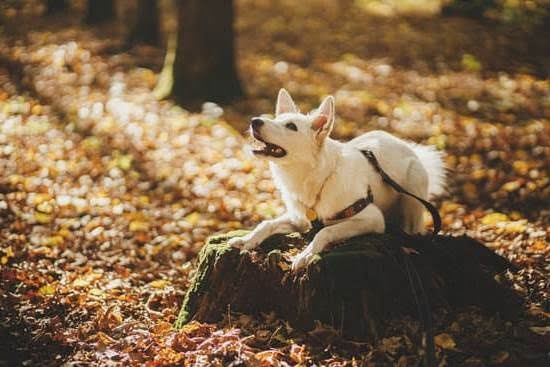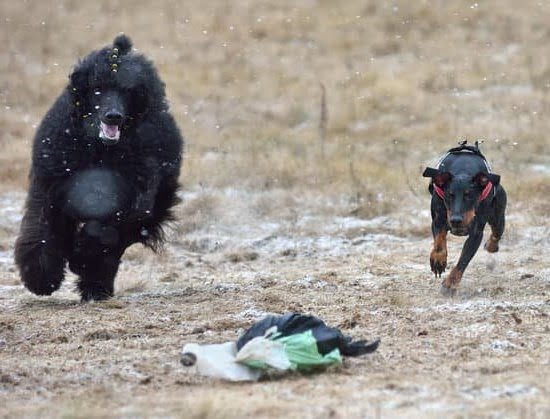Crate training is a popular and effective method for housebreaking dogs of all ages, but can i crate train my older dog as well? Older dogs can certainly benefit from crate training, even though some may believe it’s only suitable for puppies. This article will explore the ins and outs of crate training for senior canine companions, detailing the process from understanding your older dog’s behavior to overcoming common challenges in the training journey.
Crate training involves teaching your dog to see a crate as a safe and comfortable space, which serves as their den or sanctuary. It can provide numerous benefits for older dogs, including helping them feel secure, reducing anxiety, and assisting in managing behavioral issues such as destructive chewing or separation anxiety. By offering a designated area that belongs solely to them, older dogs can have a sense of security and routine, promoting positive behaviors.
Understanding your older dog’s behavior is crucial when considering crate training. As dogs age, they may exhibit different behaviors compared to when they were younger. Factors such as mobility issues, hearing loss, or cognitive decline can impact an older dog’s ability to adapt to new routines like crate training. Therefore, it’s essential to assess if your senior dog is physically and mentally capable of adjusting to crate training before embarking on this journey with them.
Understanding Your Older Dog’s Behavior
As dogs age, their behavior can change in various ways, which may impact their response to crate training. Understanding your older dog’s behavior is crucial before embarking on the crate training journey. Older dogs tend to have established habits and routines, making it slightly more challenging to introduce them to a new training method like crate training. Additionally, they may have physical limitations or health issues that could affect their ability to adjust to being crated for extended periods.
Typical Behaviors of Older Dogs
Older dogs can exhibit a range of behaviors that differ from younger pups. They may be less energetic, more set in their ways, and potentially show signs of anxiety or stress when faced with new situations. Some older dogs may also experience cognitive decline, leading to confusion or forgetfulness. All these factors should be taken into consideration when determining if crate training is suitable for your older dog.
Impact of Age on Crate Training Success
The age of your dog can play a significant role in how successful crate training will be. While older dogs
It’s essential to tailor the training approach to fit the individual needs and temperament of your senior canine companion. By being aware of how age influences your dog’s behavior, you
Assessing if Crate Training Is Right for Your Older Dog
As pet owners, one common question that may arise is, “Can I crate train my older dog?” Crate training can indeed be beneficial for older dogs, as it provides them with a safe and secure space of their own. However, before you embark on crate training with your senior canine companion, it’s essential to assess if this training method is the right fit for them.
Factors to Consider Before Starting Crate Training
When considering crate training for an older dog, there are several factors to take into account. One key factor is your dog’s previous experiences with crates. If your senior dog has had negative experiences with confinement in the past, it might be more challenging to get them comfortable with a crate. Additionally, consider your dog’s overall health and any physical limitations they may have that could impact their ability to adjust to crate training.
Another crucial factor to think about is your older dog’s anxiety levels. Some dogs may become stressed or anxious when confined in a crate, especially if they are not used to it. It’s important to observe your dog’s behavior and consult with a professional trainer or veterinarian if you have concerns about their anxiety levels.
Signs That Your Older Dog May Not Be a Good Candidate for Crate Training
While many older dogs can benefit from crate training, there are some signs that indicate your furry friend may not be the best candidate for this type of training. If you notice extreme distress or panic when attempting to introduce the crate to your senior dog, it might be a sign that they are not receptive to this form of confinement.
Additionally, if your older dog has severe separation anxiety issues or has a history of destructive behavior when left alone, it can be challenging to address these issues through crate training alone.
Ultimately, every dog is unique, and what works for one may not work for another. Assessing whether crate training is suitable for your older dog requires careful consideration of various factors specific to your canine companion. By taking the time to evaluate these factors thoroughly, you can make an informed decision about whether or not crate training is the right choice for your beloved senior pet.
Introducing the Crate to Your Older Dog
When considering whether you can crate train an older dog, it is important to introduce the crate gradually and positively. Start by placing the crate in a familiar area of your home where your dog spends time, such as the living room or bedroom. Make sure to leave the door open initially so that your dog can explore and get comfortable with the crate on their terms. You can further encourage them to investigate by placing treats or toys inside.
Once your older dog shows interest in the crate, you can begin feeding them meals near the crate to create positive associations. As they become more comfortable, gradually move their food bowl inside the crate at meal times. This will help them view the crate as a safe and rewarding space. Additionally, consider placing familiar blankets or bedding inside the crate for added comfort.
It’s essential to avoid forcing your older dog into the crate or using it as a form of punishment. This could lead to negative associations and make it more challenging to successfully crate train them.
Instead, focus on creating a positive environment around the crate and allowing your dog to feel in control of their interactions with it. With patience and consistency, even older dogs who may have never been exposed to a crate before can learn to see it as a secure space.
| Step | Description |
|---|---|
| 1 | Place open crate in familiar area |
| 2 | Encourage exploration with treats/toys |
| 3 | Feed meals near/in crate for positive associations |
Training Techniques for Crate Training Older Dogs
When it comes to crate training an older dog, it’s important to understand that the process may take a little more time and patience compared to crate training a puppy. Older dogs may have ingrained habits and behaviors that need to be addressed delicately. Positive reinforcement is key when working with older dogs during crate training. This means rewarding your dog with treats, praise, or playtime when they exhibit desired behavior in relation to the crate.
If your older dog shows resistance or anxiety towards the crate, it’s essential to address these issues with care. Start by making the crate a comfortable and inviting space for your furry friend. Place familiar bedding inside, along with some of their favorite toys or treats. Encourage them to explore the crate at their own pace without any pressure. Gradually increase the time spent in the crate while ensuring that they remain calm and relaxed throughout the process.
Consistency is crucial when implementing training techniques for crate training older dogs. Stick to a schedule that works for both you and your dog, incorporating regular potty breaks, meal times, and playtime into the routine. Remember that every dog is unique, so be observant of your older dog’s behavior and adjust your training techniques accordingly. With time, patience, and positive reinforcement, you can successfully crate train your older dog.
| Tip | Description |
|---|---|
| Positive Reinforcement | Rewarding desired behavior with treats or praise. |
| Comfortable Crate | Make sure the crate is inviting with familiar items inside. |
| Consistency | Stick to a routine schedule for successful crate training. |
Crate Training Schedule for Older Dogs
Introducing a crate training schedule for older dogs can be a beneficial way to help them adjust to their new environment and routine. Older dogs may take a bit longer to adapt to crate training compared to younger pups, but with patience and consistency, it is definitely possible. One important factor to keep in mind when creating a schedule for your older dog is their individual needs and capabilities.
When designing a crate training schedule for older dogs, it’s essential to start slow and gradually increase the time spent in the crate. Begin by introducing short periods of time where your dog is crated while you are home, allowing them to get used to being confined in a safe space. Make sure to provide plenty of positive reinforcement during these initial stages to create a positive association with the crate.
As your older dog becomes more comfortable with being crated for short intervals, you can slowly extend the duration they spend in the crate. It’s important not to rush this process as it could potentially lead to anxiety or resistance from your dog.
Be mindful of their body language and behavior throughout the training sessions, adjusting the schedule accordingly based on their reactions. Remember, every older dog is unique, so finding the right balance of crate time that works for them may require some trial and error.
Common Challenges and Solutions
Crate training an older dog comes with its own set of challenges, but with patience and consistency, these obstacles can be overcome. Here are some common issues that may arise during the crate training process, along with potential solutions:
- Resistance to Crate: If your older dog is resistant to being in the crate, start by making the crate a comfortable and inviting space. Place their favorite toys, blankets, and treats inside to create a positive association. Gradually introduce them to the crate by leaving the door open at first and allowing them to explore at their own pace.
- Separation Anxiety: Older dogs may experience separation anxiety when crated, especially if they have not been used to being confined in this way before. To address this issue, practice short periods of crating while you are home so that your dog learns that being in the crate does not always mean you are leaving. Slowly increase the duration of time spent in the crate to help ease their anxiety.
- Barking or Whining: Some older dogs may bark or whine when crated, which can be disruptive for both the dog and their owners. To discourage this behavior, avoid letting your dog out of the crate when they are whining as it reinforces the behavior. Instead, wait for a moment of quiet before opening the door and rewarding them with praise or treats.
By addressing these common challenges with patience and implementing appropriate solutions, you can help make the crate training experience a positive one for your older dog. Remember that every dog is unique and may require different approaches, so it’s essential to tailor your training methods to fit your dog’s individual needs. Consistency is key in overcoming challenges during crate training – stick to a routine and remain calm and patient throughout the process.
Don’t get discouraged if progress seems slow or if setbacks occur along the way. With time and dedication, most older dogs can i crate train my older dog successfully adapt to crate training and come to view their crate as a safe and cozy den where they can relax and feel secure.
By staying committed to the training process and providing plenty of positive reinforcement, you’ll set your older dog up for success in their new crate routine.
Patience and Consistency in Crate Training Older Dogs
Crate training an older dog requires a great deal of patience and consistency from the dog owner. Unlike younger dogs, older dogs may have already developed certain behaviors that make crate training more challenging. However, with the right approach and dedication, older dogs can certainly learn to appreciate and enjoy their time in the crate. Here are some tips to help you maintain patience and consistency throughout the crate training process:
- Set a Routine: Establishing a consistent routine for your older dog can help them feel more comfortable with the crate training process. Feed them at the same times each day, take them out for walks on a regular schedule, and provide plenty of playtime and exercise outside of the crate.
- Be Patient: Understand that it may take some time for your older dog to get used to being crated, especially if they have never been exposed to this type of training before. Be patient with them as they adjust to their new environment and be consistent in your approach.
- Use Positive Reinforcement: Rewarding your older dog for good behavior in the crate is essential for maintaining their interest in using it. Treats, toys, or verbal praise can all be effective forms of positive reinforcement when they display calm behavior inside the crate.
Consistency is key when it comes to successfully crate training an older dog. Stick to a routine, be patient with your furry friend as they adjust to this new training method, and always use positive reinforcement to encourage good behavior while inside the crate.
Remember that every dog is different, so what works for one may not work for another – be adaptable in your approach and don’t hesitate to seek professional help if needed. With time, dedication, and a lot of love, you can absolutely crate train your older dog effectively.
Conclusion
In conclusion, the question of “Can I crate train my older dog?” has been answered with a resounding yes. Crate training can be a valuable tool for not only puppies but also older dogs. The benefits of crate training, such as providing a safe and secure space, aiding in housebreaking, and reducing anxiety, can greatly improve the overall well-being of an older dog.
It is essential to take into account your older dog’s behavior and individual needs before embarking on crate training. While age can impact the success of crate training, understanding your dog’s behavior and properly introducing the crate can make the process smoother. Assessing if crate training is right for your older dog involves observing signs that may indicate if your furry companion may not be a good candidate for this training method.
By following a step-by-step guide, utilizing positive reinforcement techniques, and establishing a consistent crate training schedule, you can help your older dog successfully adapt to their new environment. Remember to be patient and consistent throughout the process, addressing any challenges that may arise with compassion and determination. With dedication and understanding, you can effectively crate train your older dog and provide them with a comfortable and safe space they can call their own.
Frequently Asked Questions
Is It Ever Too Late to Crate Train a Dog?
It’s never too late to crate train a dog, but it may take longer with an older dog compared to a puppy. Patience, consistency, and positive reinforcement are key to successfully crate training.
How Long Does It Take to Crate Train an Older Dog?
The time it takes to crate train an older dog can vary depending on the individual dog’s temperament and past experiences. It may take weeks or even months for some dogs to feel comfortable in their crate.
How Do You Introduce a Crate to an Older Dog?
When introducing a crate to an older dog, it’s important to make the crate a positive and inviting space. Start by placing treats and familiar items inside the crate to encourage exploration. Gradually increase the amount of time your dog spends in the crate, always rewarding calm behavior.

Welcome to the blog! I am a professional dog trainer and have been working with dogs for many years. In this blog, I will be discussing various topics related to dog training, including tips, tricks, and advice. I hope you find this information helpful and informative. Thanks for reading!





